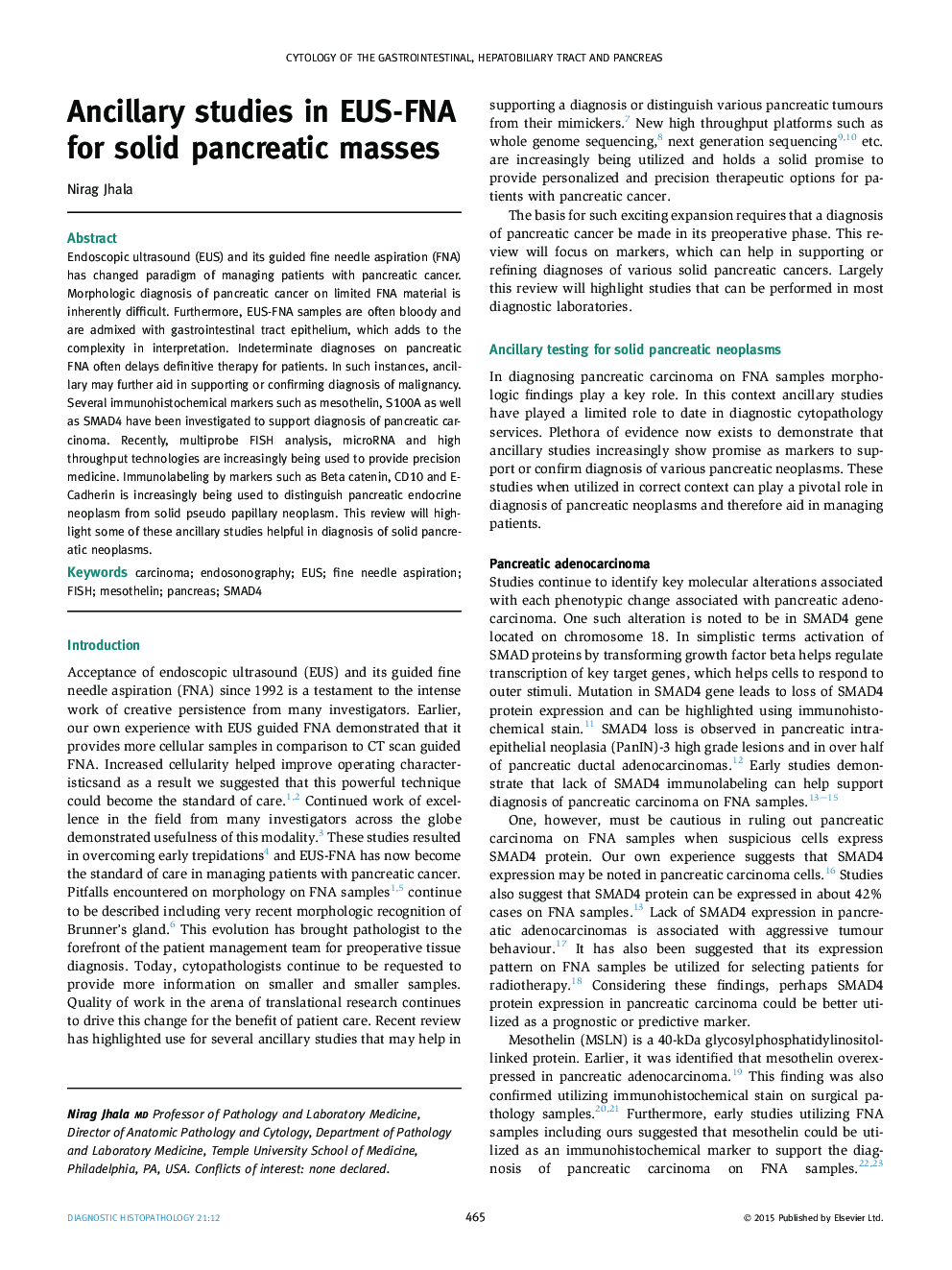| Article ID | Journal | Published Year | Pages | File Type |
|---|---|---|---|---|
| 4131004 | Diagnostic Histopathology | 2015 | 5 Pages |
Endoscopic ultrasound (EUS) and its guided fine needle aspiration (FNA) has changed paradigm of managing patients with pancreatic cancer. Morphologic diagnosis of pancreatic cancer on limited FNA material is inherently difficult. Furthermore, EUS-FNA samples are often bloody and are admixed with gastrointestinal tract epithelium, which adds to the complexity in interpretation. Indeterminate diagnoses on pancreatic FNA often delays definitive therapy for patients. In such instances, ancillary may further aid in supporting or confirming diagnosis of malignancy. Several immunohistochemical markers such as mesothelin, S100A as well as SMAD4 have been investigated to support diagnosis of pancreatic carcinoma. Recently, multiprobe FISH analysis, microRNA and high throughput technologies are increasingly being used to provide precision medicine. Immunolabeling by markers such as Beta catenin, CD10 and E-Cadherin is increasingly being used to distinguish pancreatic endocrine neoplasm from solid pseudo papillary neoplasm. This review will highlight some of these ancillary studies helpful in diagnosis of solid pancreatic neoplasms.
